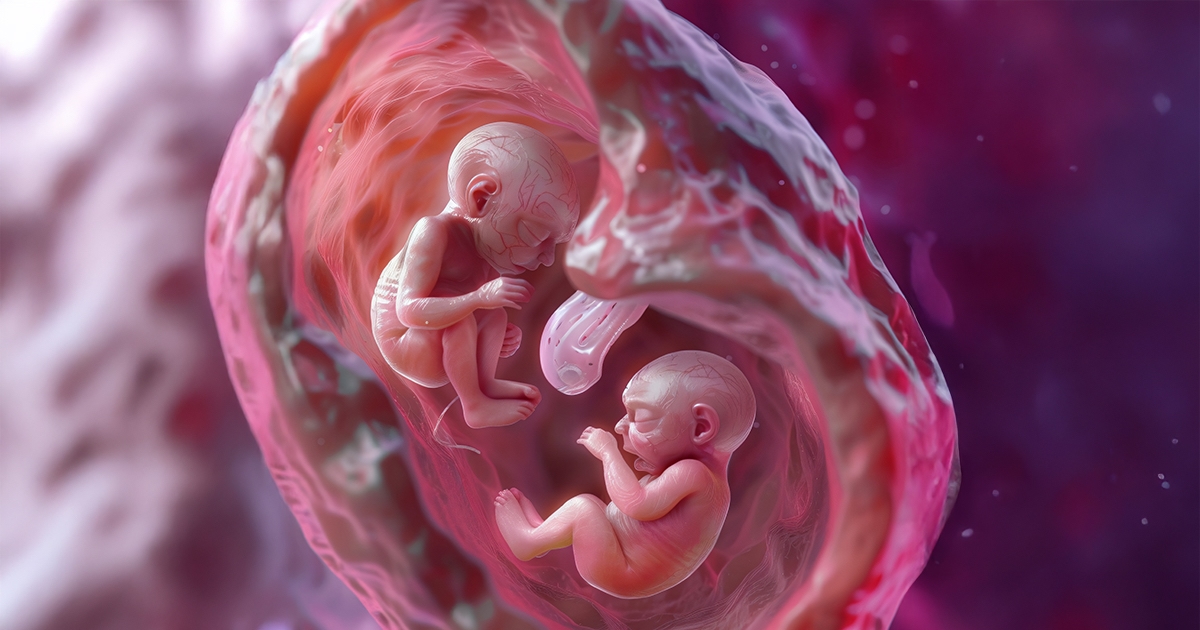What Is a Multiple Pregnancy?
A multiple pregnancy occurs when more than one baby develops simultaneously in the uterus. Twins, triplets, or higher-order multiples (quadruplets, etc.) fall under this category. The frequency of multiple pregnancies has been increasing, particularly due to assisted reproductive technologies (ART) such as in vitro fertilization (IVF). While most multiple pregnancies occur after fertility treatments, spontaneous multiple conceptions are also possible.
Why Are Multiple Pregnancies Increasing?
The rising prevalence of multiple pregnancies is mainly associated with:
- The widespread use of assisted reproduction techniques,
- Advanced maternal age, and
- Transfer of multiple embryos during IVF procedures.
For example, transferring more than one embryo into the uterus during IVF significantly increases the likelihood of twin or triplet pregnancies.
Risks Associated with Multiple Pregnancy
The most significant risk in multiple gestations is preterm birth. The greater the number of fetuses, the higher the likelihood of the pregnancy ending prematurely. Preterm infants are at increased risk for:
- Respiratory problems (due to immature lungs)
- Neurodevelopmental delay or intellectual disability
- Blindness
- Hearing loss
For the mother, the risks of pregnancy-induced hypertension, preeclampsia, and gestational diabetes also rise with multiple pregnancies.
To minimize preterm birth risks, regular ultrasound evaluations and cervical length measurements are essential throughout pregnancy.
Fetal Reduction (Multifetal Pregnancy Reduction)
When three or more fetuses are detected, multifetal pregnancy reduction may be recommended to improve pregnancy outcomes and enhance the survival chances of the remaining babies.
This procedure is usually performed between 11 and 14 weeks of gestation. Prior to the procedure, detailed fetal evaluations are conducted, including:
- Nuchal translucency measurement,
- Nasal bone assessment,
- Ductus venosus blood flow evaluation, and
- If indicated, chorionic villus sampling (CVS) for genetic testing.
Under ultrasound guidance, a fine needle is used to inject potassium chloride (KCl) into the fetal heart, stopping cardiac activity. This selective reduction allows the remaining fetuses to continue developing under better conditions.
The risk of pregnancy loss following the procedure is approximately 5–6%.
Typically, the goal is to reduce the pregnancy to twins, as the risk of prematurity increases proportionally with the number of fetuses.
Case Example 1
A 36-year-old patient conceived quadruplets after infertility treatment. At 9 weeks, one fetus was diagnosed with acrania (absence of skull bone development). At 11 weeks, another fetus showed increased nuchal translucency.
A multifetal reduction was performed, preserving two healthy fetuses. The pregnancy progressed normally, and two healthy babies were delivered at term.
Case Example 2
A 32-year-old patient presented with septuplet pregnancy following infertility treatment. At 9 weeks, two fetuses had cystic hygromas, and early fetal assessment at 11 weeks revealed increased nuchal translucency in four fetuses.
Selective reduction was performed, and the pregnancy continued with a single healthy fetus, resulting in a successful delivery.
Monitoring and Management of Multiple Pregnancies
Monitoring a multiple pregnancy requires more frequent and meticulous care compared to singleton pregnancies. Key aspects include:
- Regular ultrasound examinations
- Cervical length monitoring
- Blood pressure and glucose level checks
- Observation for early signs of preterm labor
- Nutritional counseling and weight management
Throughout the pregnancy, the expectant mother should be followed closely under the joint care of a perinatologist and an obstetrician, ensuring optimal outcomes for both the mother and the babies.

